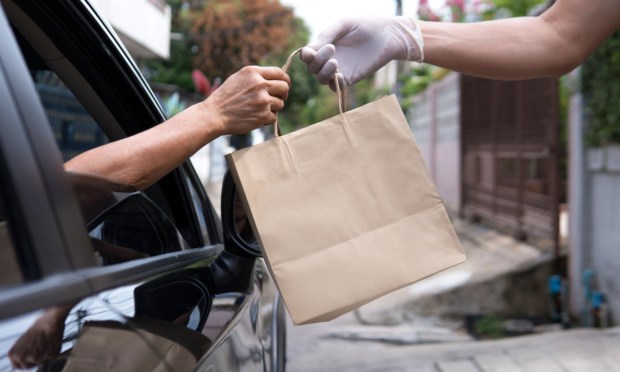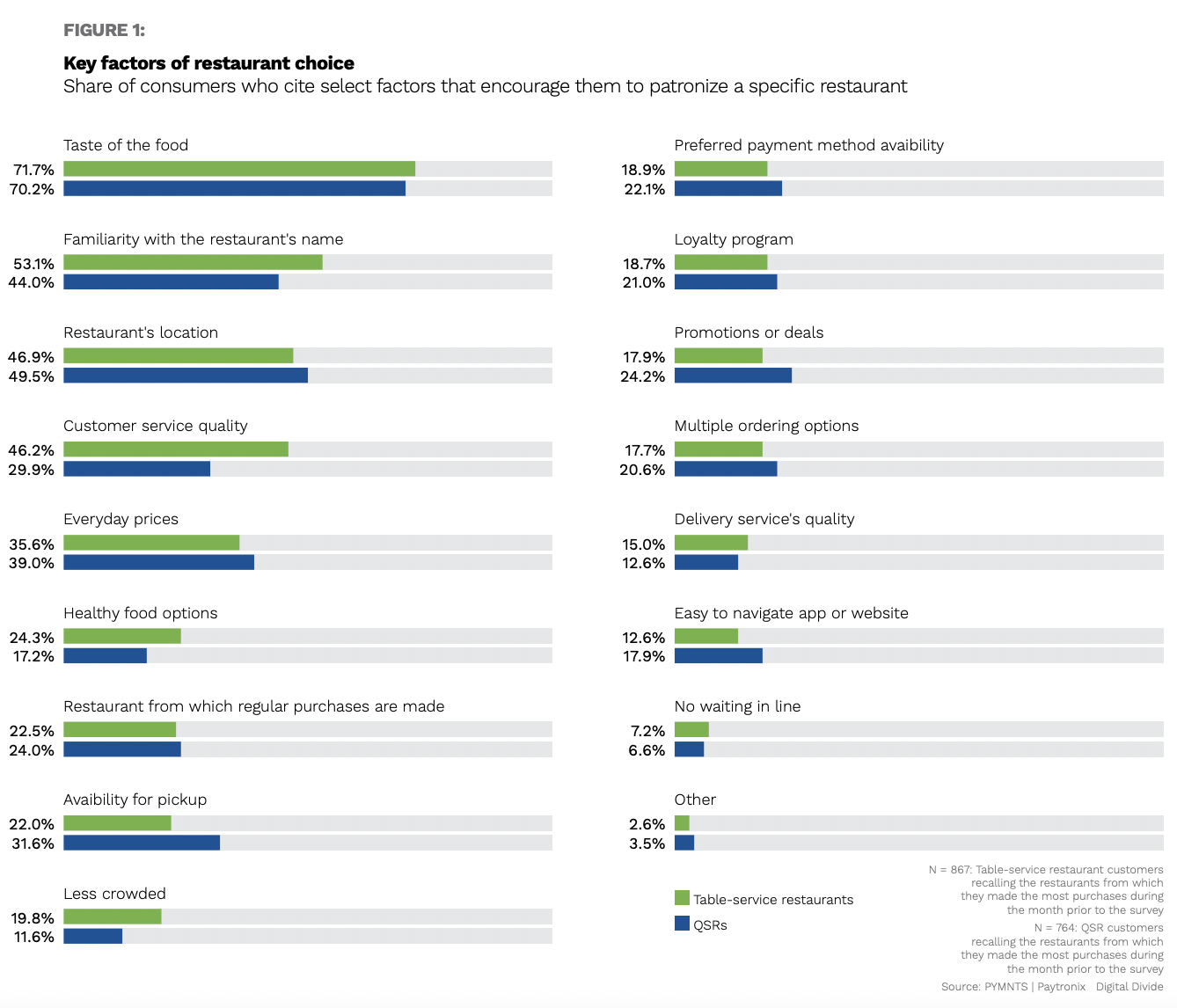Delivery Can Tip Loyalty Scales for Diners Deciding Where to Eat

As restaurants look to drive customer loyalty, PYMNTS Intelligence finds that the rise of digital ordering may be expanding restaurants’ reach beyond their immediate vicinity.
By the Numbers
PYMNTS Intelligence’s study “Digital Divide: Restaurant Subscribers And Loyalty Programs,” which is based on a survey of more than 2,000 U.S. consumers, found that less than half of all customers now make their choices about which restaurants to purchase from based on proximity.
The report revealed that 46.9% of consumers cite restaurants’ location as a factor encouraging them to patronize a particular eatery, and 49.5% said the same of quick-service restaurants (QSRs).

The Data in Context
When consumers can have food brought to them, the effort of traveling the distance to a given restaurant becomes less of a prohibitive factor. This trend has become pronounced enough that Domino’s, in a push to get customers to make the shift, has even offered promotions wherein it “tips” customers for their delivery labor, offering store credit when they choose pickup instead.
Still, many consumers are ordering delivery. For instance, DoorDash shared on its most recent earnings call that, in Q2, total orders rose 25% year over year to a record 532 million in the three-month period. Grubhub parent company Just Eat Takeaway shared in its earnings report last week that its North American business saw 69 million orders in the third quarter.
Grocery is seeing the same transformation, thanks to delivery platforms such as Instacart.
“Instacart has eliminated consumers’ need to consider proximity in their decision about where to shop for groceries,” PYMNTS’ Karen Webster wrote in a feature. “Maybe shoppers want to shop using Instacart at the same store they’d otherwise visit in person. But maybe they’d rather try a store they would otherwise skip because it requires a 40-to-50-minute round-trip drive — as many now do.”
